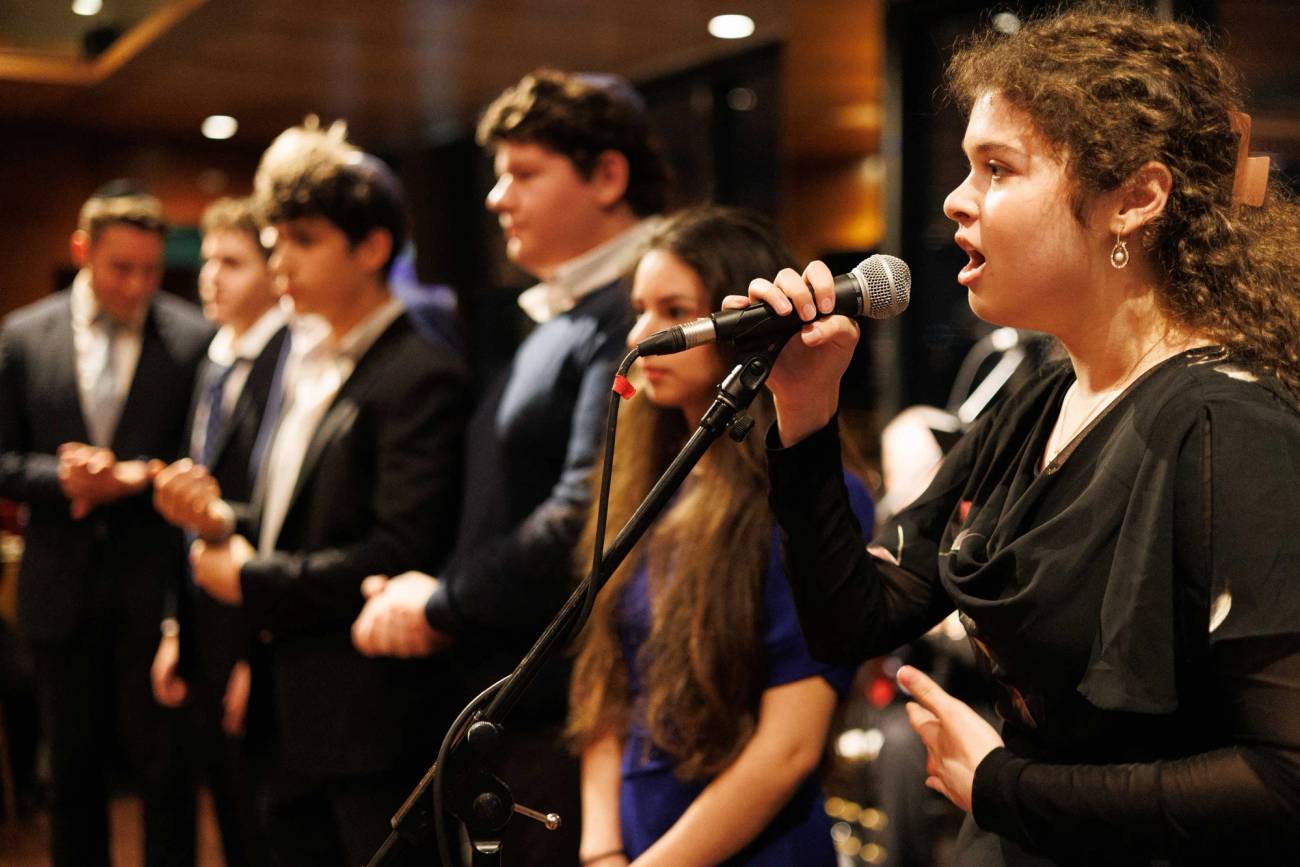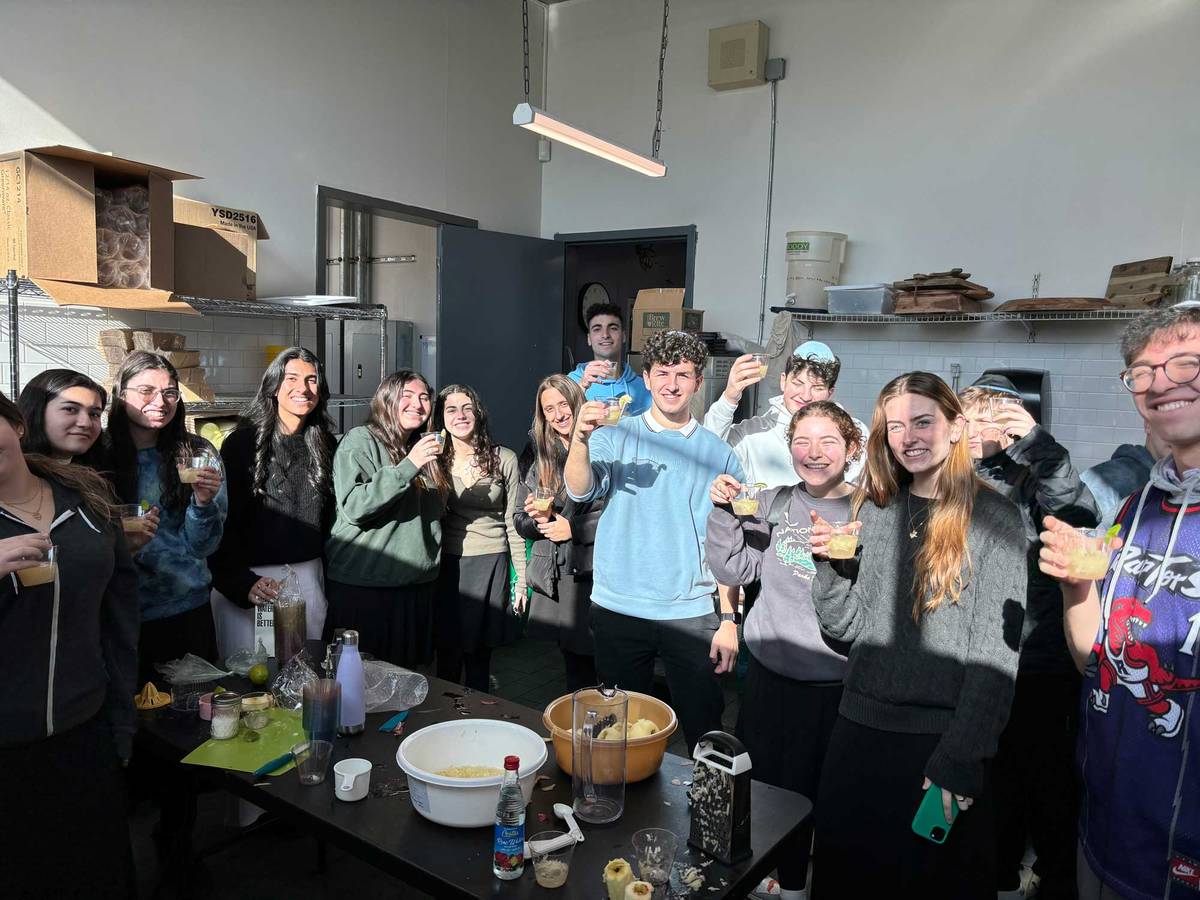Ramping Up Sephardic Education
New initiatives aim to preserve Sephardic culture and language for Jewish students

Sirin Samman Photography

Sirin Samman Photography

Sirin Samman Photography
“Kayikçi, Balata, peshkadikos de la mar, choop, choop, a la mar!” This Ladino (Judeo-Spanish) nursery rhyme (“Oarsmen, take me to Balat, little fish of the sea, choop, choop, into the sea”) dates to when Istanbul’s Jewish population lived in Balat and Hasköy, and traveled between these two districts on opposite banks of the Golden Horn.
For Janine Sadaka, whose two young daughters love hearing this ditty, these verses evoke memories of her Sephardic childhood in New York as the American-born daughter and granddaughter of Turkish Jewish immigrants whose ancestors had immigrated to the Ottoman Empire after the Spanish expulsion. “Ladino is part of my culture,” she told me. “Since language is such a big part of the culture, I want to continue it.” Ladino is part of her toddler and preschool daughters’ daily vernacular: They hear expressions such as “oras buenas” upon coughing (similar to “bless you” on sneezing) and customarily ask in Ladino for food such as “budaraho,” or "bottarga,” a Mediterranean salted fish roe delicacy. “They recognize the word and don’t pay attention to the language,” said Sadaka. “These are words and phrases that are ingrained in me.”
Sephardic studies professor Devin Naar has raised his two sons as Ladino speakers. Today he reads Ladino stories and listens to Ladino music with his 5- and 8-year-old boys; they also enjoy watching Enkontros de Alhad, a weekly Ladino program aired on Sunday from Buenos Aires, as well as Ladino videos such as “Unidos por el Ladino” and “Estreyikas de Istanbul” (Little Stars of Istanbul). “They do not have peers who are also learning or speaking Ladino,” said Naar, “so it makes the whole experiment more challenging.”
Yet few Sephardic American kids speak Ladino at home. Developing a strong Sephardic identity is challenging without learning its culture, laws, traditions, and rituals at home, camp, or synagogue. And outside of large Sephardic communities like Seattle, they have little opportunity to socialize with Sephardic peers. That’s why recent initiatives such as a national Sephardic youth movement, a Sephardic authors project, and Jewish day school programs are critical to preserving Sephardic culture in America.
Jewish youth movements in the U.S. have traditionally reflected the Ashkenazi cultural and religious experience. Recently announced was the first-of-its kind Sephardic youth movement: Bivas, the Ladino High School Club of America. Bivas (Ladino for “Live!”) strives to build the next generation of American Sephardic leaders through cultural engagement, Ladino language infusion, the study of Sephardic customs and traditions, and connections with Jewish teens in grades 9-12 across the U.S. “We want to preserve the Ladino heritage and save an endangered language,” explained Miriam Raphael Klein, who founded the club, a new youth project of the Sephardic Jewish Brotherhood of America.
Bivas officially launched at the International Sephardic Community Gala in December 2023: Sephardic teens wooed the audience with Ladino songs. On Shabbat morning, they led a Mitzvah Auction, or “Mil Dan”—a tradition among Jews with Greek and Turkish ancestry of auctioning Torah honors in Ladino, using increments of pennies.
Judah Roberts, a junior at Katz Yeshiva High School of South Florida and founder of its Ladino Club, studies Ladino weekly on Zoom with students from across the country such as Sarah Miller, a 12th-grader at Northwest Yeshiva High School in Mercer Island, Washington. Miller, a member of the Seattle Bivas Club, hopes to reclaim the Ladino her great-grandparents spoke in the Balkans.
During the weekend of April 4-7, Bivas will hold a pre-Passover Shabbaton in Orlando. Sephardic teens from across the U.S. will sing Passover songs in Ladino, visit local tourist attractions, participate in Sephardic cooking classes, and socialize with their peers. Atlanta teen Daniel Kassorla, for example, looks forward to making new friends while celebrating his own rich heritage that he traces back to generations of Sephardic rabbis.
From early childhood on, informal and formal education are important in fostering Sephardic identity. For years, PJ Library has included books with Sephardic themes among the 50 million free books in seven languages it has distributed to families with Jewish children, newborn to age 12, in 40 countries.
“But we realize that we need to play a more active role in inspiring and nurturing Sephardic authors because most of the books are very Ashkenormative. We don’t want any child in a Jewish household to feel that they don’t see themselves in the story. We want them to feel pride and identify with the stories they read,” explained Catriella Freedman, director of the Author and Illustrator Stewardship program for PJ Library’s new Sephardic Stories Initiative. This two-year program provides financial incentives and in-person experiences for seven Sephardic children’s book authors; a mentorship program for emerging writers is scheduled for fall 2024.
Sarah Aroeste sees this initiative as an opportunity to expand the scope of her writing beyond the signature board books such as Mazal Bueno!, Buen Shabat, Shabbat Shalom, and Bavajadas: That’s Just Silly! (scheduled for fall 2025 release). As part of the Sephardic Stories Initiative, Aroeste—whose projects often map to her daughters’ milestones—is writing her first middle-grade novel about a Sephardic tween, partly set in the Sephardic Adventure Camp. “For me, it is thrilling to be in conversation with other Sephardic writers,” said the Ladino author and singer, who has also designed Sephardic curricula for Jewish day schools and public schools.
“Sephardic kids are not as well represented in their stories. I would like to add more Sephardic background to these stories,” said Terri Libenson, also one of the seven initiative participants. Author of the “Pajama Diaries” comic strip and several children’s book series, she hopes to explore her own Sephardic ancestry while bringing the Sephardic experience to life.
Sephardic students have often felt marginalized at Jewish day schools. Today, though, Jewish day schools are becoming more inclusive, with Sephardic minyanim, curriculum changes, and more inclusive language.
Sephardic inclusivity is a double opportunity both for its Sephardic and Ashkenazi student body, says Rabbi Jonathan Kroll, principal of the SAR High School Academy in Riverdale, New York, where 10% of its 670-member student population is Sephardic: “I want the Ashkenazim to feel that the Sephardim are welcome participants in the conversation. It is important for Sephardic students to feel that they are not guests but hosts. For Ashkenazi students, it means raising the profile that the Sephardic students are an important, established minority. The Jewish people should be understood not just as the people you are familiar with.”

Denise Zami Samstein
For SAR junior Steven Shamah, these initiatives have provided important benefits at the predominantly Ashkenazi school: They have raised awareness about Sephardic culture and its diverse traditions and united students from different Sephardic backgrounds and cultures. The Sephardic morning minyan has also become more vibrant, attracting more than 50 students daily. “It’s very interesting to hear about the different backgrounds,” said Shamah, “and I am getting to appreciate the different kinds of Sephardic Judaism.”
Shamah, who recently served on a student panel at a SAR faculty and staff meeting to discuss Sephardic inclusion, noted how things have changed already: “When I was a freshman, there was not a lot of awareness. Now we feel proud. I was impressed that teachers took time out of their day to learn.”
SAR is consciously working to ensure that the Sephardic perspective figures prominently in all aspects of student life, including prayer, extracurricular activities, and Jewish law classes where students learn the differences between Sephardic and Ashkenazi Halacha. For example, instead of the Yiddish term “davening,” the Hebrew term “tefilah” is used for prayer.
Fourteen years ago, SAR introduced a Sephardic daily morning minyan, and last year engaged Judaic studies teacher Denise Zami Samstein as its first director of Sephardic engagement. She has raised awareness of Sephardic history, culture, and traditions in many ways, including posting pictures of Sephardic scholars around school, speaking to classes about Sephardic identity, inspiring Sephardic teachers to discuss their own backgrounds, and actively working with student activity groups to ensure inclusive programming. Students—such as those in the Sephardic Club’s cooking classes—are encouraged to learn each other’s traditions.
Yet, sometimes practical considerations create challenges. For example, as a small, coed, modern-Orthodox day school, the Atlanta Jewish Academy lacks the critical mass to support multiple minyanim for students who reflect diverse Jewish religious traditions. “Just because an educator doesn’t actively pursue programming that highlights the Sephardic experience, it doesn’t mean that he is not actively supporting Sephardic culture or promoting Sephardic minyanim. It is pragmatic because of the number of pots on the stove,” explained Head of School Rabbi Avi Levitt, who hopes to redesign the Jewish history curriculum to better reflect the Sephardic experience.
JIMENA—a resource center about the history, heritage, and culture of Sephardic and Mizrahi Jews—has addressed this challenge with its new “Sephardi and Mizrahi Toolkit“ for educators. It contains a compendium of recommendations, strategies, and resources to help educators learn about Sephardic and Mizrahi heritage and shape inclusive school environments. JIMENA has also published a list of selected readings for adults as well as for children. Additionally, JIMENA has commissioned a demographic study of Sephardic and Mizrahi Jews in the U.S., with a research team based at NYU and Brandeis University under the direction of Mijal Bitton.
“For centuries, the Jewish people have known no one standard of geographic origin, ethnic background, religious practice, or cultural outlook. And yet, the historical and contemporary richness and diversity of Jewish experiences have not been consistently demonstrated in representations of Jewish Americans, particularly in day schools,” said Ty Alhadeff, JIMENA’s director of education and head of the Sephardic Leadership Institute. “We hope that we can help educators provide students with a richer and more expansive understanding of Sephardic culture and identity.”
Are these initiatives worthwhile, considering that only 3% of Jewish Americans self-identify as Sephardic, according to the Pew Research 2020 Report on Jewish Americans?
Al Maimon, vice president of the Seattle Sephardic Network and elder adviser to the Sephardic Jewish Brotherhood of America, believes so: “There is something unique to the Sephardic worldview and how we identify as individuals and families. Initiatives like Bivas are an important part of the fabric of our 21st-century life and the different parts of the puzzle.”
But Jewish communal organizations must step up. “We are at a critical crossroads for the future of the Sephardic community,” cautioned Ethan Marcus, managing director of the Sephardic Jewish Brotherhood of America. “Either we grow into our role as a critical part of the mosaic of American Judaism or we continue to shrink and become more irrelevant for the American Jewish experience.”
Paula Jacobs is a writer in the Boston area.